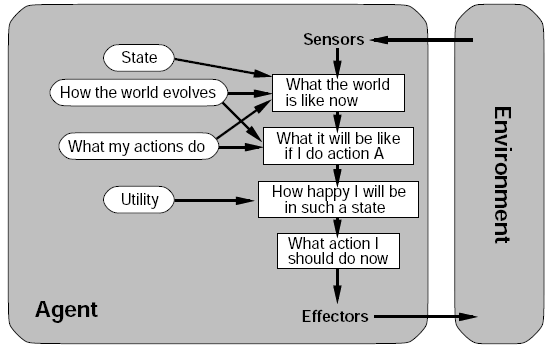I had no idea there were so many forms. I learned many of them from this very helpful page! My English Teacher
But I started my search in the ever inspiring ...
The phrase structure rules presented below are my own. Some structures recur in several places. They may probably be grouped. For a more authoritative reference, see Stanford Parser
I use the following abbreviations:
- EQ = identity (is, was, are, were)
- BE = auxiliary (is, was, are, were)
- DO = auxiliary (do, does, did)
- HAVE = auxiliary (has, have)
- MOD = modality (can, could, will, would, shall, should)
and these syntactic categories
- NP = noun phrase (a "thing")
- VP = verb phrase (an action, or more general, a predication)
- ADJP = adjective phrase (i.e. red, little, happy)
- ADVP = adverbial phrase (i.e. quickly, happily)
I grouped the questions by their response type, which I showed in each of the headings.
Factual yes/no-questions or choice questions (boolean / a selected object)
- DO NP VP (did Lord Byron marry Queen Elisabeth, did Lord Byron not marry Queen Elisabeth)
- DO NP VP (did Lord Byron marry Queen Elisabeth or Anne Isabella Milbanke)
-- - EQ NP NP (was Lord Byron king of England, was Lord Byron not king of England)
- EQ NP NP (was Lord Byron a king or a lord)
-- - BE NP ADJP (is the block red)
- BE NP ADJP (is the block red or blue)
-- - BE NP VP (was Lord Byron born in London, was Lord Byron not born in London)
- BE NP VP (was Lord Byron born in London or Cambridge)
-- - HAVE NP VP (has Napoleon invaded Germany, has Napoleon not invaded Germany)
- HAVE NP VP (has Napoleon invaded Germany or The Netherlands)
-- - MOD NP VP (would you like a cup of coffee, should I leave my things here, can dogs fly, can i ask you a question, can you stack a cube on a pyramid)
- MOD NP VP (would you like coffee or tea)
Uninverted yes/no questions (boolean)
- NP VP (Lord Byron married Queen Elisabeth?) (question mark is required)
Wh-questions (which, what, who; name one or more individuals)
- WHO VP (who married Lord Byron, who was Lord Byron's wife)
- WHO BE NP VP (who are you seeing)
- WHO DO NP VP (who does Pierre want to beat)
- WHO HAVE NP VP (who have you been seeing)
- WHO MOD VP (who can drive me home)
-- - WHOM DO NP VP (whom do you believe)
- WHOM HAVE NP VP (whom have you believed)
- WHOM MOD NP VP (whom should I talk to)
WHOM -> WITH/TO WHOM (with whom is Peter speaking) - --
- WHICH NP VP (which countries border the mediterranean, which countries do not border the mediterranean)
- WHICH BE NP (which is the best option)
- WHICH DO NP VP (which do you do more often)
- WHICH NP MOD NP VP (which way should I go)
-- - WHAT NP VP (what rock sample contains most iron, what food items did you eat)
- WHAT BE NP (what is the biggest block, what is your name)
- WHAT DO NP VP (what do laptops cost)
- WHAT HAVE NP VP (what has Churchill done to stop the war)
- WHAT MOD NP VP (what should I do)
-- - WHOSE NP VP (whose autographs have you collected, whose parents will drive)
- WHOSE NP BE NP (whose book is that)
Amount (a number, requires aggregation)
- HOW MANY NP VP (how many children had Lord Byron, how many children did Lord Byron have)
Degree (a number, the unit result depends on subject)
- HOW MUCH NP VP (how much sugar goes in a single drink)
- HOW ADJP BE NP (how high is the Mount Everest, how tall is the tallest man, how small is a mouse, how old are you)
- HOW ADVP DO NP VP (how often do you go to the movies, how nicely do I need to dress tonight)
Manner (a means)
- HOW BE NP VP (how was Napoleon crowned king)
- HOW DO NP VP (how do you go to work)
- HOW HAVE NP VP (how has Napoleon invaded Britain)
- HOW MOD NP VP (how can I become more productive)
State (a state)
- HOW BE NP (how are you)
Reason (a cause)
- WHY BE NP VP (why was Napoleon crowned king)
- WHY DO NP VP (why did Napoleon invade Germany)
- WHY HAVE NP VP (why has John hit Jake)
- WHY MOD NP VP (why should I go)
Time (a time)
- WHEN BE NP (when was the marriage)
- WHEN BE NP VP (when was Napoleon crowned king)
- WHEN DO NP VP (when did you start wearing make up)
- WHEN HAVE NP VP (when have you bought the tv)
- WHEN MOD NP VP (when can I go home)
WHEN -> WHEN PP (when in the next hour do you want to go)
Place (a place)
- WHERE BE NP (where is it?)
- WHERE BE NP VP (where is the concert taking place)
- WHERE DO NP VP (where did you go)
- WHERE HAVE NP VP (where has Sally gone)
- WHERE MOD NP VP (where can I find a pub)
WHERE -> WHERE PP (where on the map is it)






















